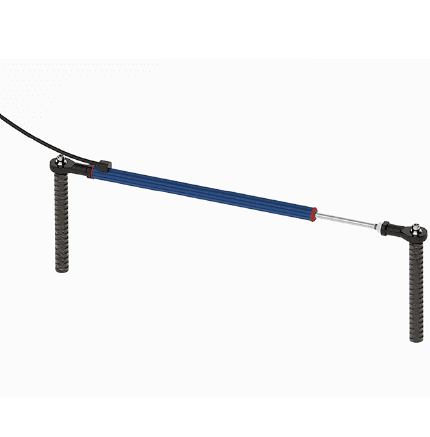Canada’s Instrumentation Leader Since 1946.


Geosense® LPCM-4500 crack meters are used to measure movement across surface cracks and joints in concrete, rock, soil and structures. They consist of a potentiometric displacement transducer housed in an aluminium body with a stainless steel shaft with two anchoring points. The potentiometer works on the principle of an outer body […]
Geosense® LPCM-4500 crack meters are used to measure movement across surface cracks and joints in concrete, rock, soil and structures.
They consist of a potentiometric displacement transducer housed in an aluminium body with a stainless steel shaft with two anchoring points.
The potentiometer works on the principle of an outer body tube and an inner free-sliding wiper which makes electrical contact along a strip of fixed resistance. A regulated DC voltage is applied to the two ends of the resistance strip and the voltage between one end of the strip and the contact point of wiper and strip is measured as the output signal. On board signal conditioning provides an output signal in 4-20mA.
LPCM-4500 crack meters are installed by grouting, bolting, bonding or fixing expandable anchors to the structure to be monitored. The anchors incorporate ball joints where they are fixed to the gauge which accommodate any differential cross-axis movement and prevent the inner rod from binding within the outer casing.
| Range | 25, 50, 75, 100, 125, 150, 175, 200 |
| Resolution | 0.01% FS with MP12 readout |
| Accuracy | < ±0.20% FS |
| Repeatability | <0.01mm |
| Nonlinearity | ≤0.5% FS |
| Operating temperature | -30 – +125°C |
Copyright - 2025 - Hoskin Scientific